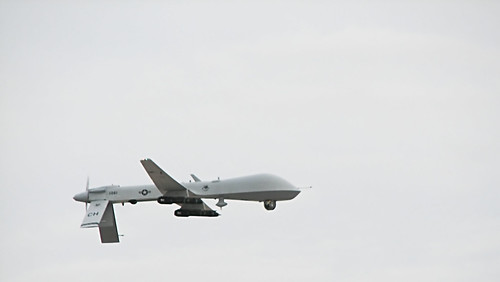 Last night, Retired Admiral Thad Allen talked before a group of Norwich University students and Northfield residents for the latest entry in the Todd Lecture series, with a talk titled 'Leading Through Crisis and Times of Change'. Adm. Allen is uniquely qualified on this particular subject, having served as the person in charge for the Hurricanes Katrina and Rita cleanup just after the storm destroyed parts of New Orleans, the Haiti Earthquake and as the National Incident Commander for the BP Oil Spill in the Gulf of Mexico earlier this year. Each disaster was an unprecedented event that warranted extraordinary response measures, and in each case, the issues that
Last night, Retired Admiral Thad Allen talked before a group of Norwich University students and Northfield residents for the latest entry in the Todd Lecture series, with a talk titled 'Leading Through Crisis and Times of Change'. Adm. Allen is uniquely qualified on this particular subject, having served as the person in charge for the Hurricanes Katrina and Rita cleanup just after the storm destroyed parts of New Orleans, the Haiti Earthquake and as the National Incident Commander for the BP Oil Spill in the Gulf of Mexico earlier this year. Each disaster was an unprecedented event that warranted extraordinary response measures, and in each case, the issues that
Leadership was the focus of the talk, amongst the times when leaders were most needed to complete and correct the problems that have typically faced the country. While Allen's experiences are monumental, major disasters, much of what he had talked about were very applicable lessons for everyone: ways to confront challenges in the workplace, in the community, and if needed, on a state or national level. Over the course of its history, the country has tackled a number of challenges and problems facing it, and there is no doubt that there will be plenty more in the future. One of the key things that I've found in both my education and employment at Norwich University (more so with my employment) is that leadership is an incredibly important thing when it comes to any organization.
When Katrina and Rita hit New Orleans, Allen likened it to the effect of a weapon of mass destruction, without the criminal element, and then response to the problem. Had the city been hit with a nuclear weapon or something that could produce a similar effect, a vastly different response would have been put together. A key element in leadership is the people in place who can reconcile both competency and opportunity in the face of a situation while seeking the appropriate outcome. The major issue with the Katrina disaster was that the people in charge of the recovery at first didn't understand what the problem was. There was a broken link between understanding what the priorities were, and applying the resources accordingly. When he arrived eight days after the storm, a different problem had to be tackled, with authorities operating without a clear chain of command. They broke the city up into different sections, with various organizations such as the Marines and 82nd Airborne taking control of specific tasks. First responder teams worked to provide logistical, security and rescue support for each house in the city, with the members of these teams given the authority to work under the Mayor of the city.
The thing that struck me the most was how much of leadership consisted of problem solving, and just how profound the realization was that problems changed dramatically while they're playing out, and that the best response often comes beforehand, with people under one's command / supervision who can be used to deal with problems as they arise. When it came to Haiti, Allen likened it to Katrina on a much larger scale, and with other, additional problems. While the country's leaders had survived, the UN mission found itself without leadership when their building collapsed, causing problems interfacing between the country and the rest of the world. As what had been found during the Katrina response, a clear, unified command wasn't present in the country. Many of the lessons that were learned during Katrina were applied in the response to Haiti, to the effect of where U.S. command and control infrastructure was packed up into a C-140 and flown down.
Haiti was devastated, and once again, relief efforts had to utilize the resources at hand. Port du Prince was destroyed, Allen said, due to engineering and the magnitude of the quake, cutting off the only major way to receive large amounts of materials. As a result, the air space was restricted, and a large-scale effort was put into place to bring in supplies by air. At the peak of the air operations, 160 flights per day were landing, helped by several years of work from the 1st Air Force and lessons learned in Iraq and Afghanistan. NGOs on the ground were also used, because the people on the ground knew the people that they were delivering relief to: a human response to the human problems was needed, and helped in a lot of ways.
The next major issue was the one that is still in the news: the Gulf Oil Spill. Allen was very clear on a couple of points: despite the controversy over BP’s role in the spill, his attention was on the parts that needed to be taken care of right away: containing the spill, capping the well and killing it. Despite the fact that the oil company had a hand in the disaster, they made incredible efforts to kill it, and faced enormous technical and engineering problems that resembled more of Apollo 13 than the Exxon Valdez.
Additionally, there wasn’t an apparent role for the federal government: this started off as a private sector problem, and BP wasn’t seen as a responsible party because they weren’t answerable to the general public.
The oil spill was incredibly complicated. The spill had to be stopped, and three missions emerged: the technical problems with stopping hot hydrocarbons gushing out at 12,000 psi into a cold environment, an oil spill on the surface that changed every day with the wind, and protecting the coastlines. The scale of this disaster dwarfed the response plans currently in place, and was so different (aimed towards something along the lines of a tanker spill than a blow out) that it required a new way of thinking. Once the response came under way, a massive job was undertaken to coordinate the efforts: all efforts needed to be coordinated in order to bring about the best results: boats on the water cleaning oil and the shorelines, and when an organization becomes complex in ways such as this, some things break down.
One thing was transparency, which Allen noted was essential in this day and age. People are armed with cameras, social media, and are willing to use them, and in this instance, while responsible parties can work on coordination and delegation, people on the ground need to be included, with the assurances that what they’re doing will be backed up by the people in charge. A transparent organization works the best, because it tends to be self-correcting. It was noted that the decision to put up cameras was a positive one, because people could see what was going on, and when things were starting to get better. Requests to put a time delay on the video were denied, because it would damage perceptions that the company and cleanup efforts were honest and doing what they were supposed to.
Coming out of these three disasters, Allen imparted several key things when it came to leadership. The first is that anyone can be a better leader, and that the best leaders never stop learning. They continue to learn and adapt to the situation, and from prior disasters or incidents, lessons can be learned. Lessons 9/11 informed Katrina, which informed Haiti, which in turn informed the Gulf Oil Response.
Second, leaders cannot lead from the top down, the bottom up or from the center: they lead from everywhere. The human element of any response is a key thing, and people who are working to address a problem need to be empowered to do their jobs, with someone backing them up from the top. According to Allen: “To be a better leader, you must become a better person,”
What strikes me as most relevant to these points is not that they are only applicable to major disasters, but to any number of instances that most people face, and the key to this talk was that leadership can be found everywhere, in everyone: people need to recognize when actions are needed, by managing the appropriate resources available in the proper way.
What struck me the most was how focused Adm. Allen was throughout the talk, especially when he spoke about social media and the 24/7 newscycle that we now have in the country. They key element seems to be to adapt and work with people on the ground who want to help, but to remain focused on the task at hand, regardless of perceptions, pundits and political elements who have their own agendas. His view of BP clashed with the perceptions of the public and that of the media, and while he noted that they had their own issues in their image, they approached the problem with the best of intentions where it was needed: without the resources and expertise that BP provided and applied to the spill, the crisis would have been much worse.
In the future, he noted, there needs to be a better doctrine to shift from short-term solutions to long term recovery for places such as Katrina, Haiti and the Gulf, which in and of itself will require new ways of thinking about problems. In the meantime, lessons need to be learned for how to tackle the next unforeseen problem that will face the country: natural disasters, attacks, industrial mistakes, and so forth are all possibilities, and the only sure solution will be someone who can find an effective way to recognize the problems and apply the proper response needed. Such effective leaders should empower those under their supervision, and will be ones who will learn from the experiences and lessons of the past.
 Every year, the 501st Legion goes to the polls to elect new leadership for the group. This year, my friend Mike Brunco and I decided that we were going to run for the leadership roles, with Mike taking on the Commanding Officer position, and with me taking on the Executive Officer post.
Every year, the 501st Legion goes to the polls to elect new leadership for the group. This year, my friend Mike Brunco and I decided that we were going to run for the leadership roles, with Mike taking on the Commanding Officer position, and with me taking on the Executive Officer post.

